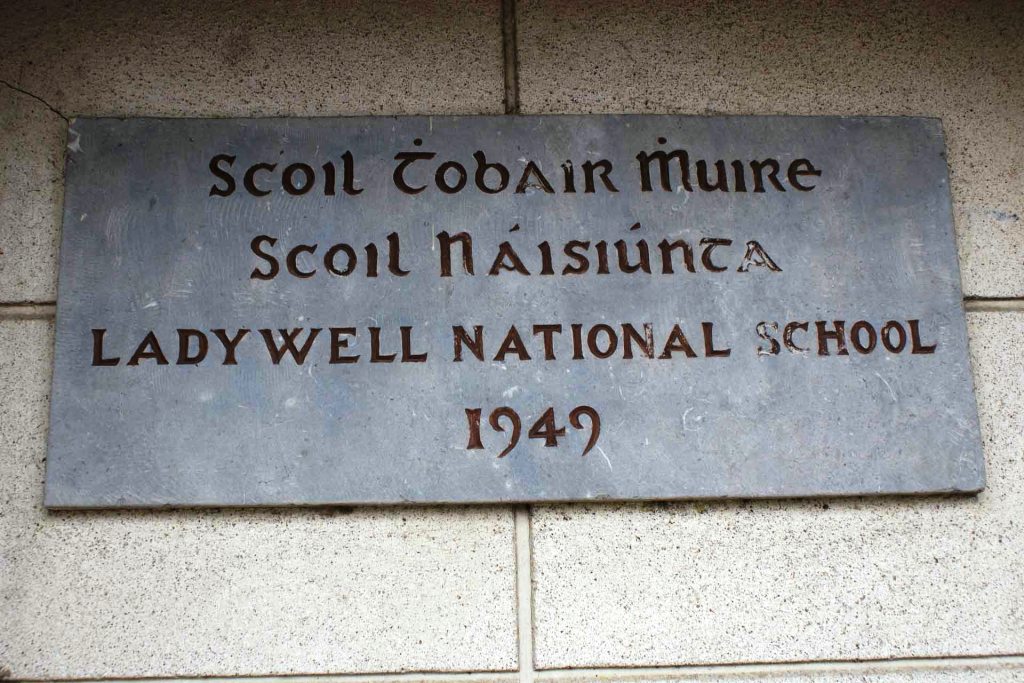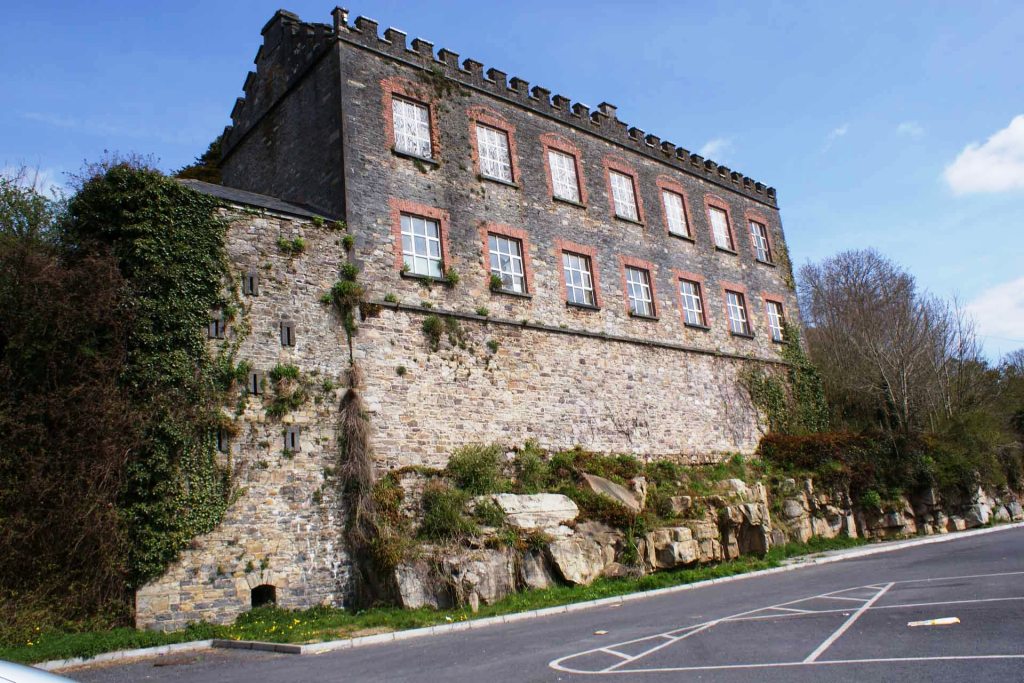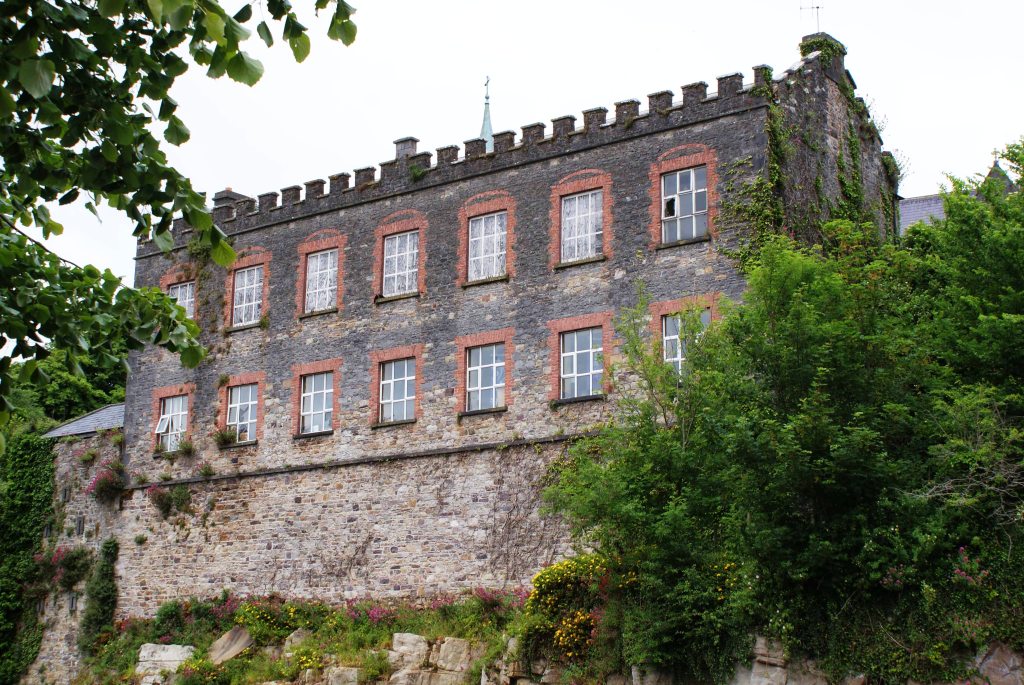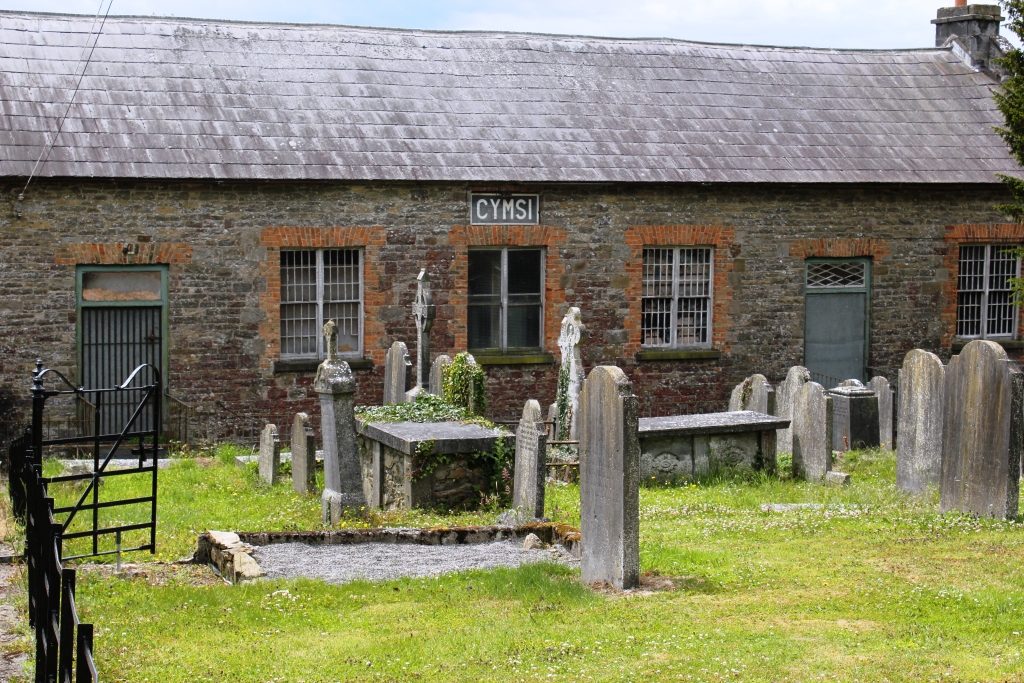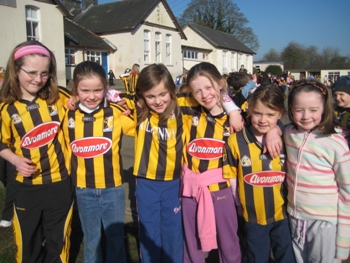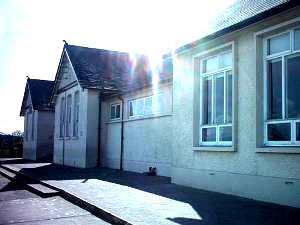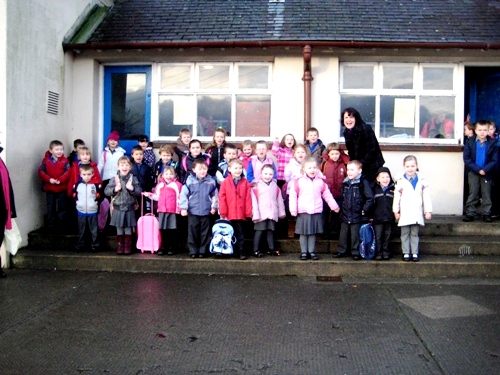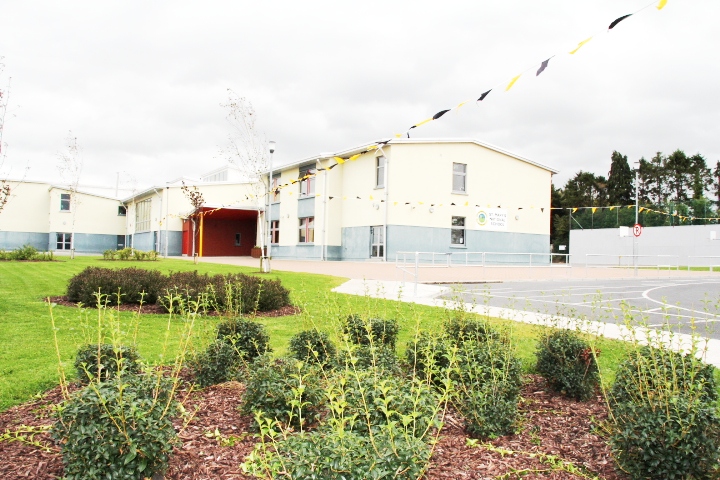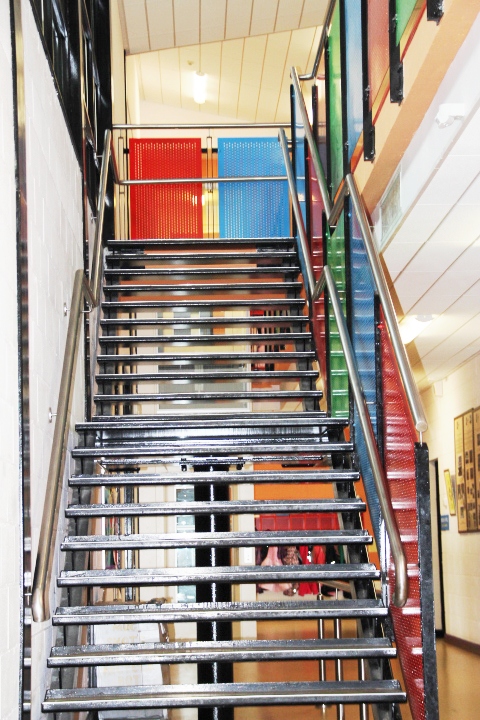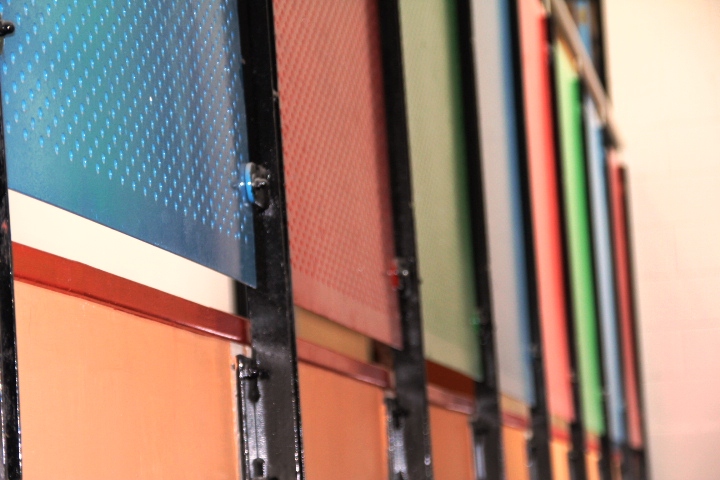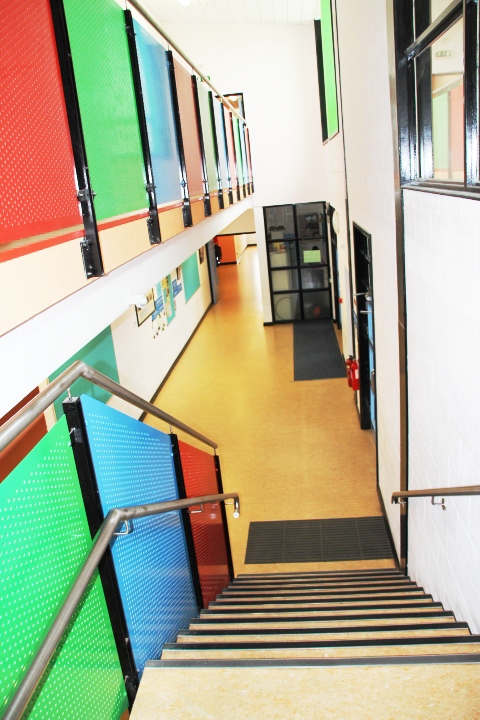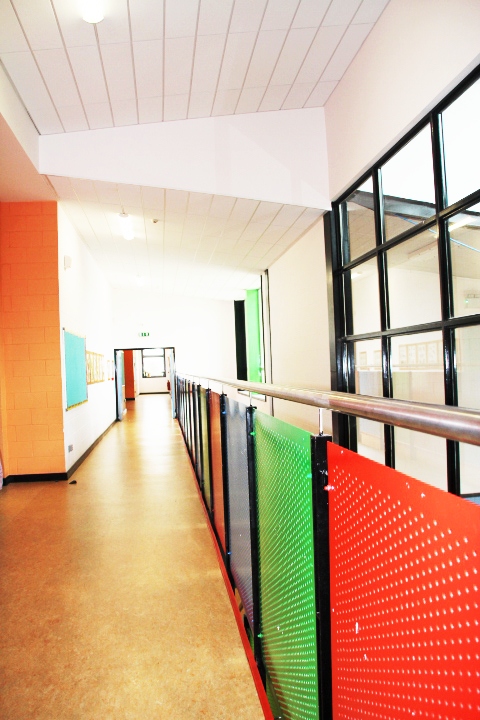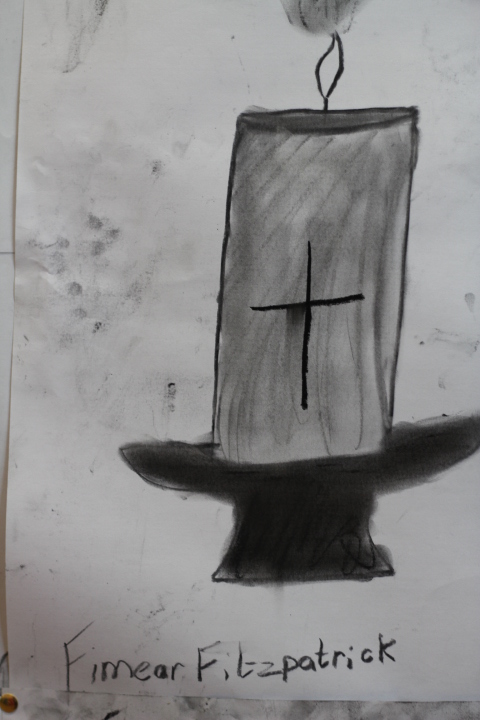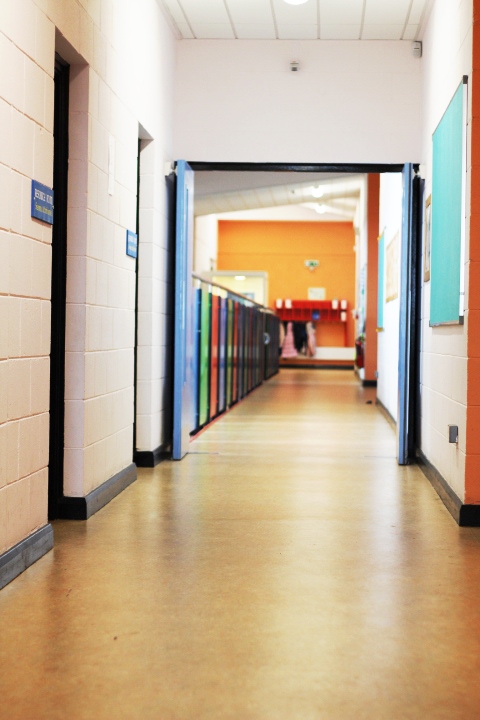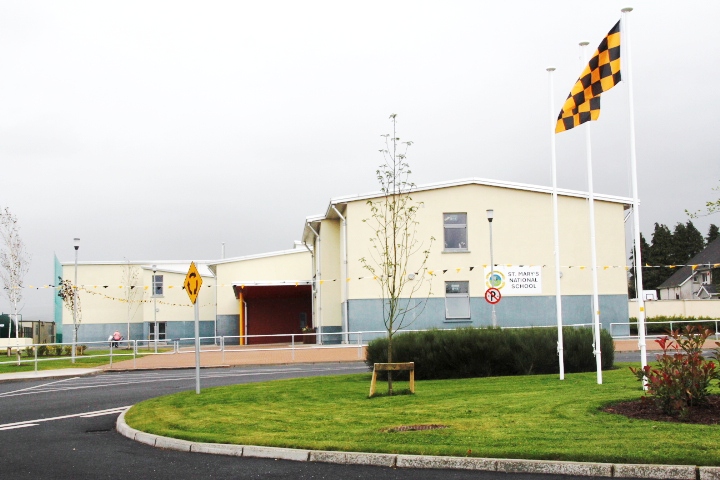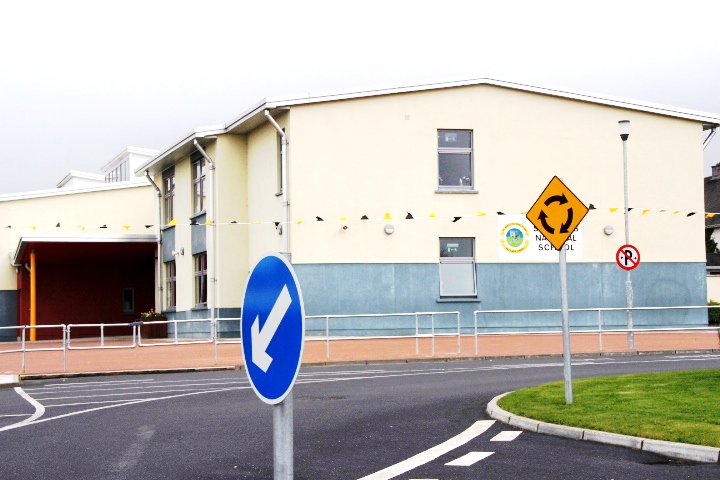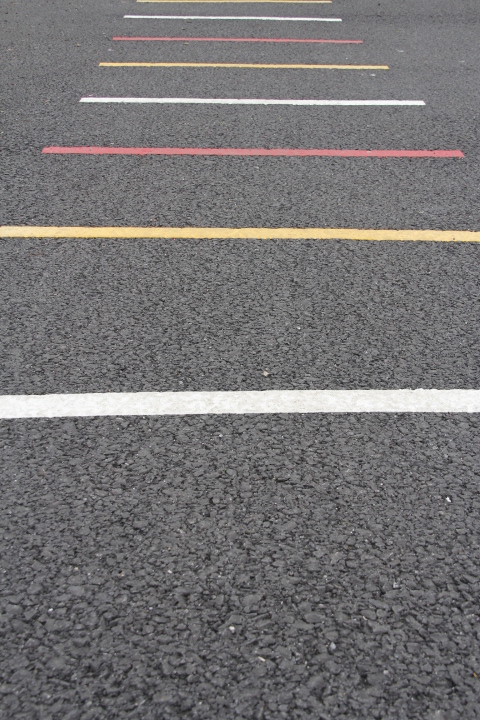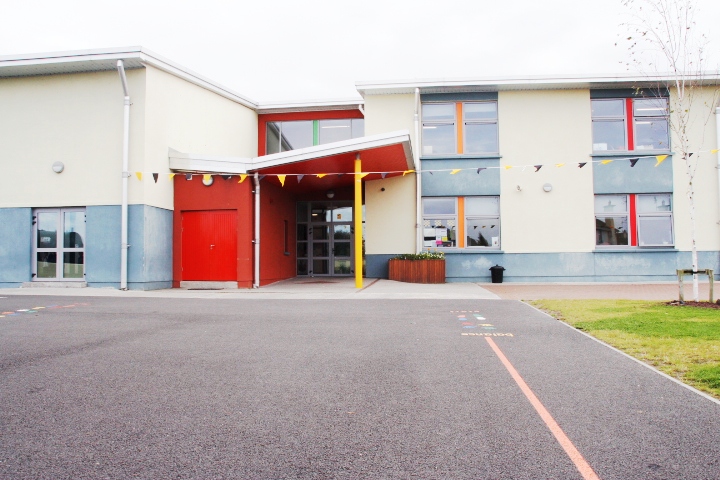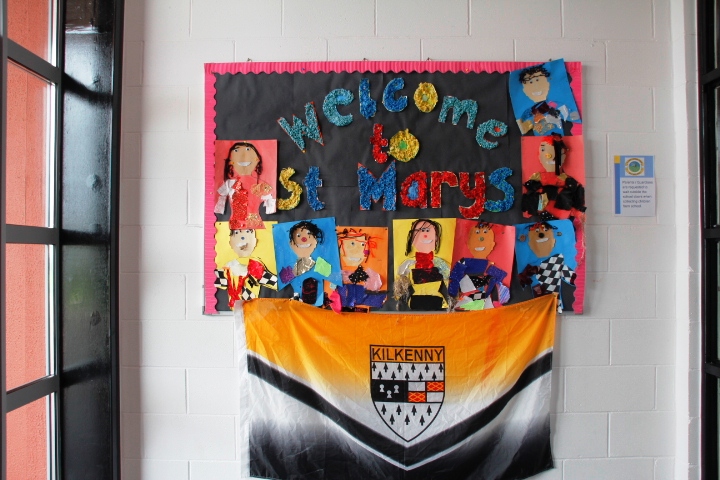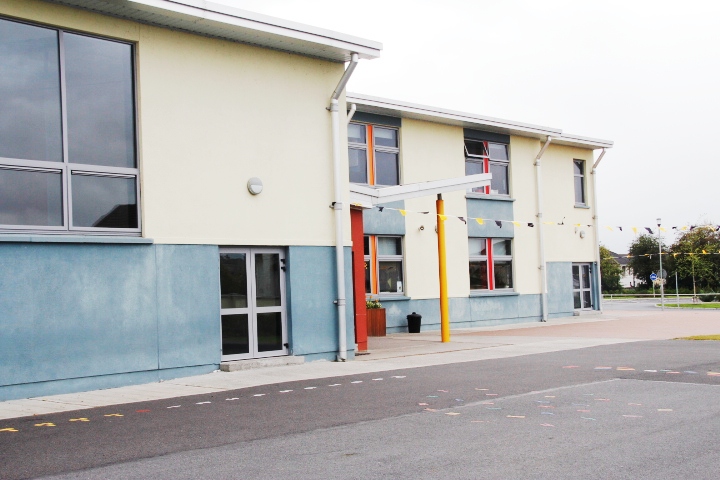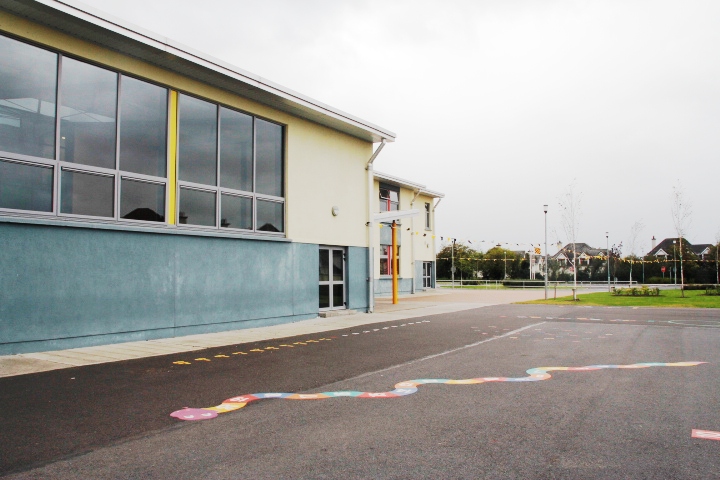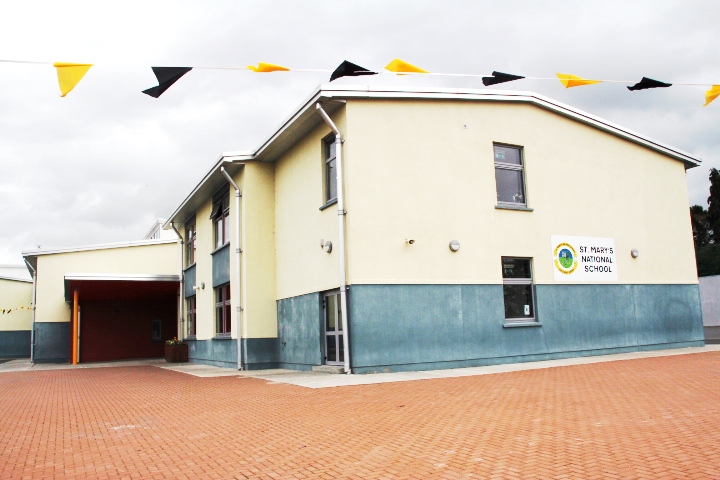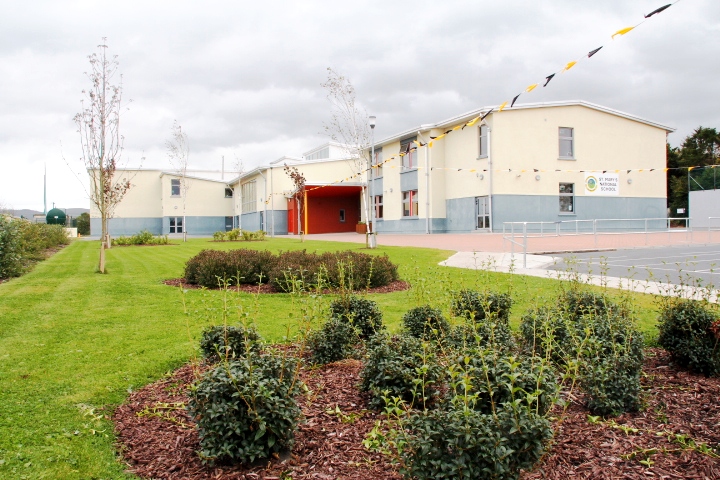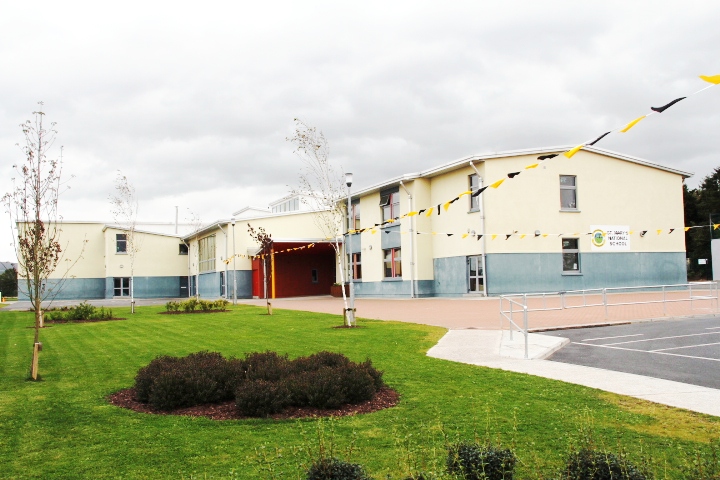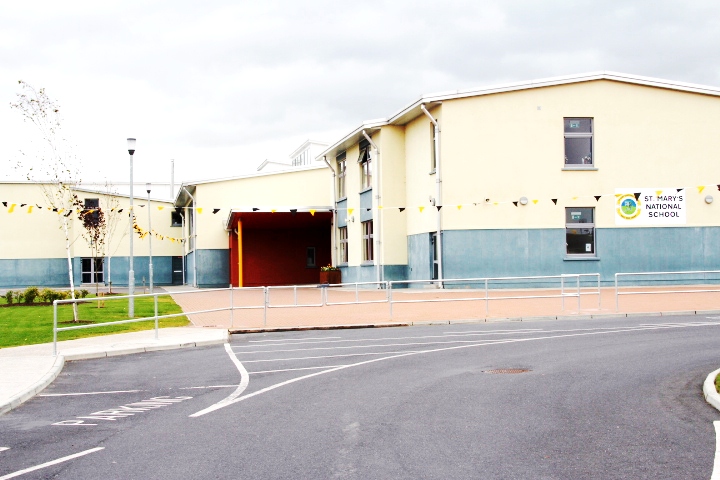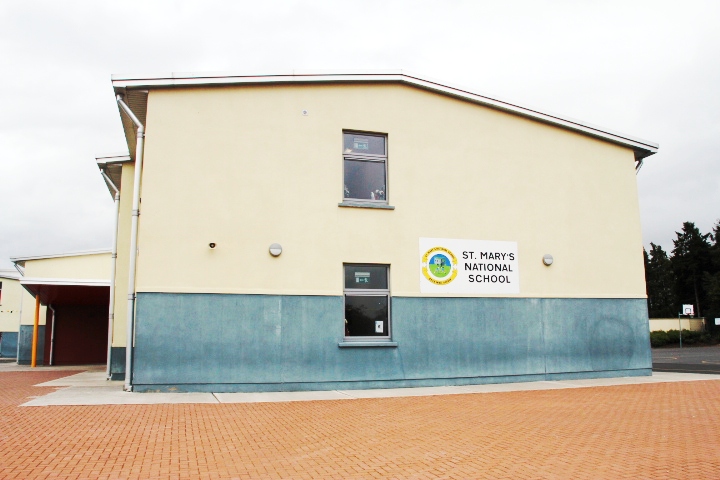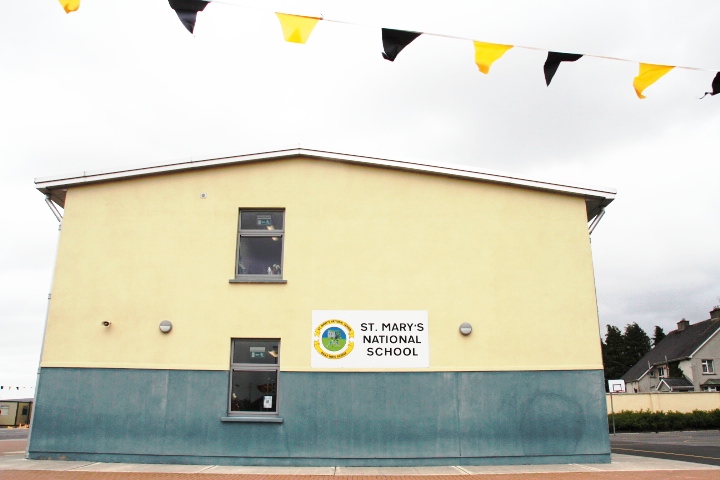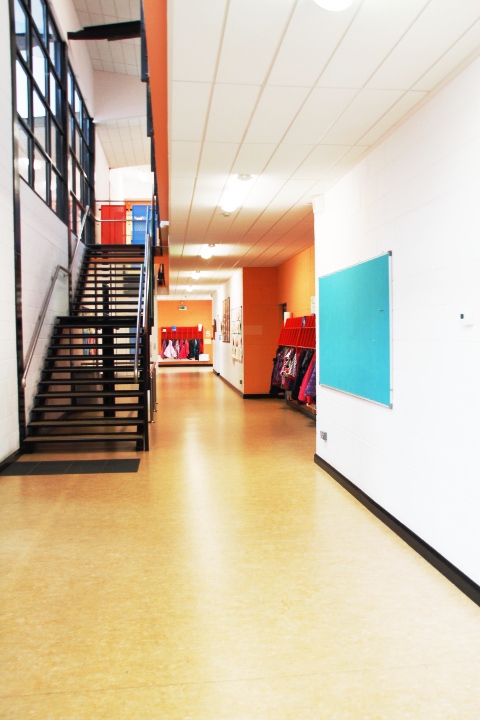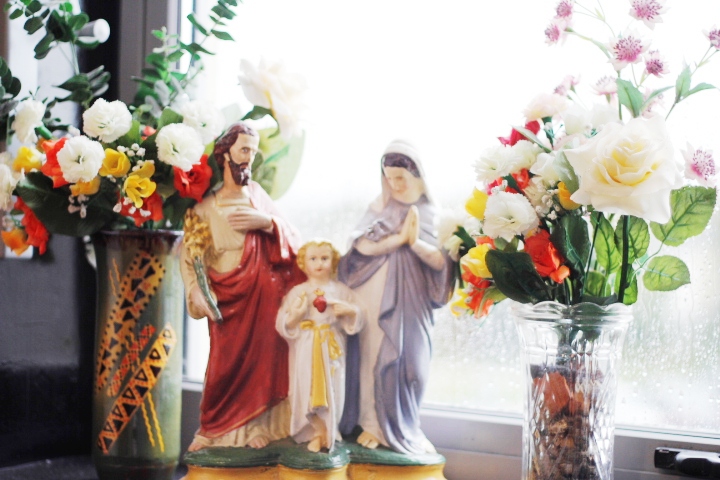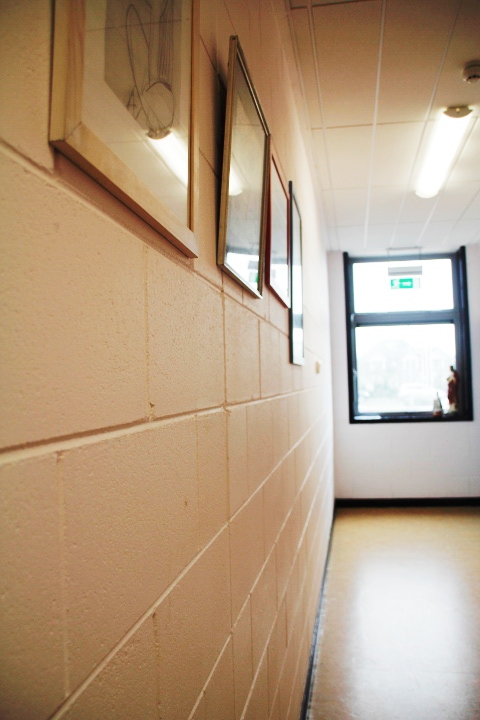In 1826 there were twenty-four schools in Thomastown parish with a total attendance of 1100 – 695 males and 405 females – of whom all but twenty-three were Roman Catholics. It appears that only two schools were attended exclusively by girls. One was referred to as ‘the Convent’. It was under ‘Miss Fitzgerald and others’ and was situated on the open ground adjoining the present Belfry graveyard. There is no record that this community of women were attached to any recognised order. The other all-girls school was that conducted by Rebecca Cassidy, a Protestant, at Ballydonnell. A boys’ school operated from a rented room in the Convent. Records indicate that the remaining twenty-one schools had a mixed attendance. In 1839 when the parish undertook to establish a national school the population of the town was stated to be ‘nearly three thousand’ with ‘between seven and eight hundred children … in need of education’. The substantial, two storey schoolhouse, situated on a rock-face at the edge of the graveyard was built at a cost of £800, fully paid for by the parish. Here the boys of the town were to receive their education for the next one hundred and ten years – a facility they shared with the girls until they moved to their new Convent of Mercy school in 1910. The first principal of the boys’ school was John Walsh who in the late 1840s was appointed principal of the newly-opened Athy District Model School, where he had a distinguished career. Very little by way of records survives from the early days of the school but the earliest surviving inspector’s report, from 1909, is very positive I am very pleased with the manner in which this school is conducted. Very good lessons in Arithmetic, Drawing, Singing and Drill were given during visit. An excellent spirit of work prevails. The report by the Diocesan Inspector, Rev. Thomas Bowe, while overall was positive, suggested that there was still room for improvement: The children made a very satisfactory examination, being excellent at Prayers and Catechism, and very good at Instruction and Bible History. The Sen. Preparatory Class by themselves would not get the highest mark. Despite scattered petty criticisms from officialdom, the overall tone of reports, both lay and clerical was commendatory. As time went on, especially after the girls transferred to their brand-new school, all parties were agreed that the school building was no longer suitable for the purpose intended. Initially lack of local finance and, throughout the early decades of the new state, the pressure on State finances, led to a lengthy delay in providing a new schoolhouse. This was finally realised with the opening of Ladywell BNS – Scoil Thobair Mhuire – in 1949, the building where so many of our local male population received their education until boys and girls were once again united under one roof in the amalgamated St Mary’s National School. Over a period of a century the boys’ school had just seven principals: Tom O’Gorman (1912-1930); Joseph Barron (1930-34); James O’Shea (1934-35); Peadar Laffan (appointed Principal in 1935 and died while conducting class 14 January 1958); Tom Comber (1958-); Eddie Kennedy (); Brendan O’Sullivan ( – until amalgamation) ‘School’s Out Forever!’
The Education of Boys in Thomastown
In 1891 thirteen members of the Sisters of Mercy came to Callan and established a convent in Thomastown. Their names were: Sister Agnes Cullen, Teresa Foley, Leo Hickey, Clare O’ Halloran, Ursla Nolan, Lelia Cahill, Zita O’ Hanlon, Alphonsus Cox, Kostka Greene, Margaret Mary Condren, Ignatius Kenny, Vincent O’ Reilly and Dympna Howlin. They lived for eight years in Mill View House and began an ‘academy for young ladies’. But this accommodation proved inadequate and in 1896, on Lady Day, a public meeting in the town inaugurated a building fund for a new convent. The New Convent: It was announced that the land had been acquired next to the Catholic Church on a lease of 999 years from Colonel Somerset Butler of Kilmurry. The first list of subscribers to the fund contained the names of 78 people, almost all resident in the parish, who gave sums ranging from £100 to one shilling. The actual building work began in 1898 when it was announced that the total cost was expected to be nearly £4000. The Sisters had already arranged to borrow £3000 and they ‘threw themselves on the charity of the people’ for the remainder. The Bishop of Ossory, Abraham Brownrigg, at whose invitation the Sisters ‘so generously and disinterestedly took up this good work of founding a convent at Thomastown’ in a letter to the Mother Superior, Margaret Mary Condren, early in 1896, expresses his pleasure’ that at length you are about to commence the building of your new Convent. The inadequate accommodation which you resent house affords made this an imperative necessity. At the end of the year, at the annual collection, 468 new subscribers were recorded with sums from £10 to one shilling. Again, most of the donors lived in the parish, although this time there were a few who lived in the parish, although this time there were a few who lived overseas. A further collection brought 366 more donors (some of whom had given previously) and this time the list more overseas contributors. The new St. Joseph’s Convent was opened by the bishop in 1899. Its architecture was described at that time in the ‘Moderator': The building is in the gothic style…….and has a main frontage of about 96 feet with return elevations of about 68 feet. The main arcade is flanked by two gables at either side. There cannot have been a family in the parish, which did not contribute to the building fund, with amounts ranging form £100 to £1. Fund-raising had to continue, however, as debt persisted despite this generosity. In October 1901, there was a successful charity sermon. In the summer of that year there was a huge bazaar and sports meeting at Grennan. It attracted large crowds, estimated at between five and six thousand people. The ‘Moderator’ reported: The various stalls, refreshment rooms, café, chantant, ect were held in spacious marquees…… The Decorations……represented the fronts of antique building, such as Notre Dame and other medieval buildings, bringing to mind the streets of an ancient city….. It was a great day for Thomastown and a most successful one for the sisters, clearing off much of the outstanding debts on the convent. Sisters and Education: The initial application for a grant from the National Board of Education towards the cost of the buildings a School House in Thomastown was made in December in 1838 in the name of Revd. Laurence Murphy P.P. By September 1839 the Revd. Murphy could report that he had commenced building a school on ground connected with the chapel yard. it is 81.5 feet in length and 24 feet in breath, containing two floors and will accommodate the children of the town and its vicinity. It is built in the best possible manner and with the best possible materials. He gave the population of the town alone as ‘nearly three thousand’ and that ‘there are between seven and eight hundred children in Thomastown in need of education’. In time, this building came to house three schools, Boys’, Girls’ and Infants’ (mixed). It is now C.Y.M.S. Hall. The primary aim of the Sisters of Mercy in setting up a convent in Thomastown was to become involved in the education of girls in the parish. Therefore it is not surprising that on the retirement of the Principal of the Infants’ School in 1892, it was ordered that This school which has hitherto been recognised as an ordinary school in charge of lay teachers be recognised as a Convent national School in charge of the Sisters of Mercy. Similarly, on the retirement of Miss Bridget Kelly, Principal of the Girls’ school in July 1896, the nuns were placed in charge. These two schools amalgamated in August 1903. The convent was paid by capitation grant. In December 1903 the Manager, Rev. John O’ Shea, sought an increase in this capitation grant for the convent and in backing up this request he states ‘When the Sisters of Mercy took charge they immediately started several subjects not hitherto taught viz, drawing, music, machine sewing, book-keeping’. This request, needless to say, occasioned a number of inspectors’ Reports. One such report in 1904 states ‘I am satisfied that very thorough and excellent work is being done in this school’, while a further report in 1905 describes the teachers as ‘earnest and painstaking.’ A capitation increase of 1/ – was allowed, from 30/- to 31/- p.a. The Need for a school: As early as 1902, the manager’s attention was being directed to the unsuitability of the school premises. In 1903, he is advised that ‘It is hoped that no avoidable delay will occur in providing suitable premises’. Indeed the capitation increase referred to was only grudgingly granted due to the state of the school: The floor of the room is broken in several places, some of the desks are shaky, and a number of panes of glass are broken in the windows. Following the urgings of the Board of Education, work was begun on the building of a new convent school. The school was completed in 1920. The debt incurred, which was only finally extinguished in 1920 by two charity concerts, prevented the Manager from complying with the Board’s wish that a new Boy’s school be also built. The inspector reported in July 1913: “In my opinion the situation of the school-house is a menace to the health of the pupils and teachers….It is quite hopeless to expect the Manager to take any steps in the immediate future towards providing a new building. There is a debt of £1200 or so on the newly erected Girls’ School.” Even with the clearing of the parish debt in 1920, the building of a Boy’s School was not proceeded with for another quarter of a century.
A History of the Convent of Mercy

St Joseph’s Convent as it is today ~ Opened by the bishop in 1899
Our New School - St. Mary's National School



